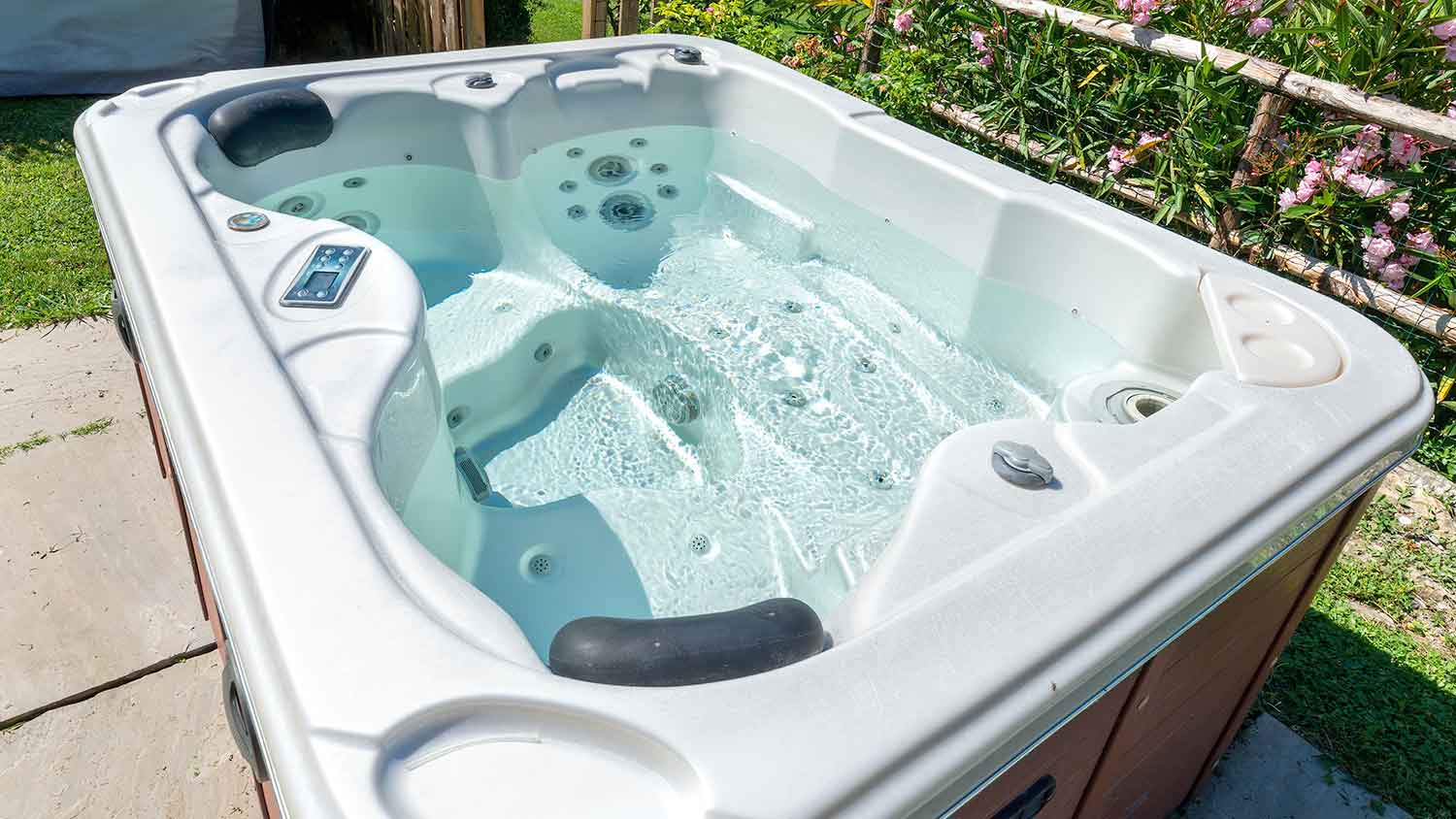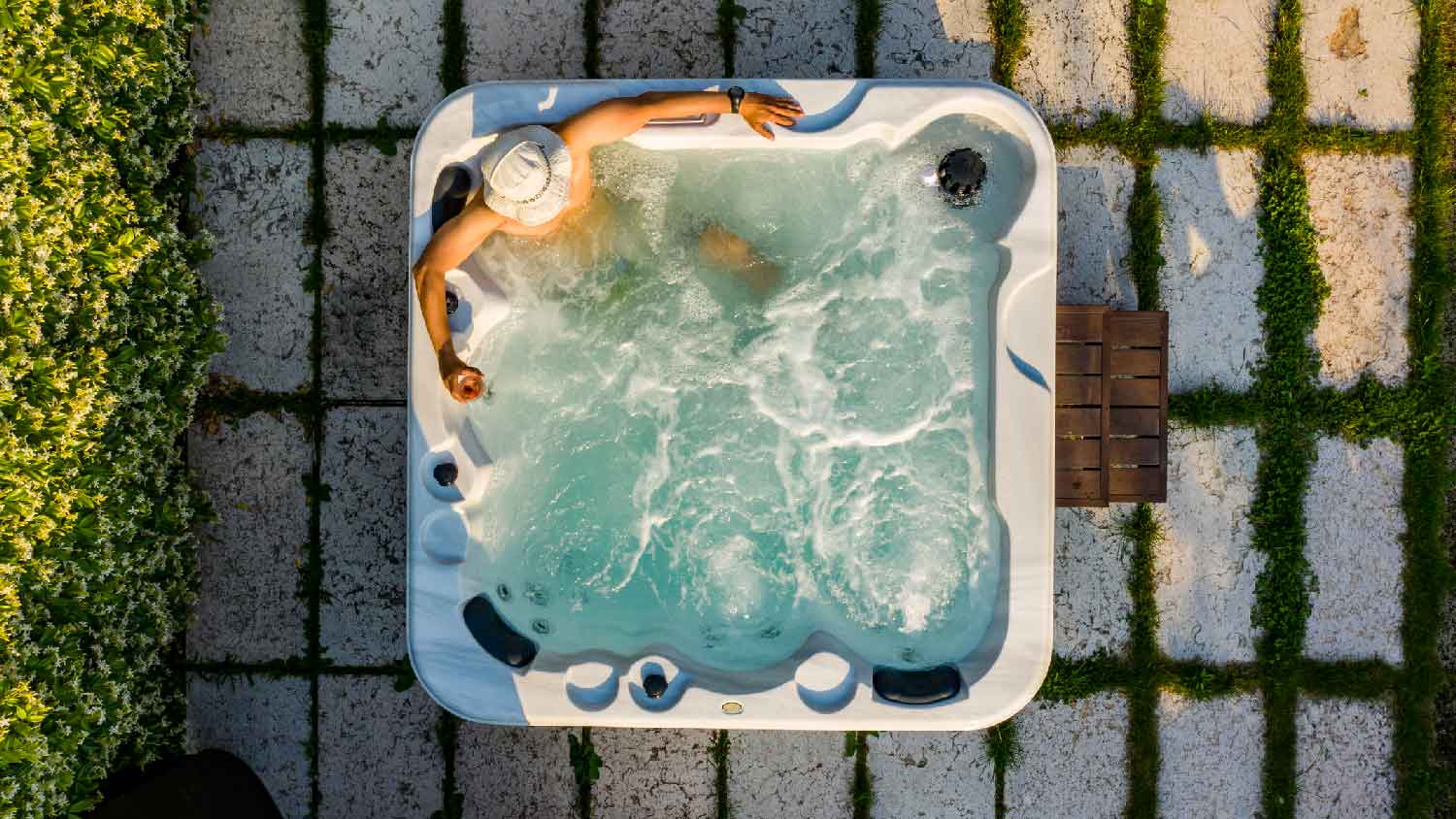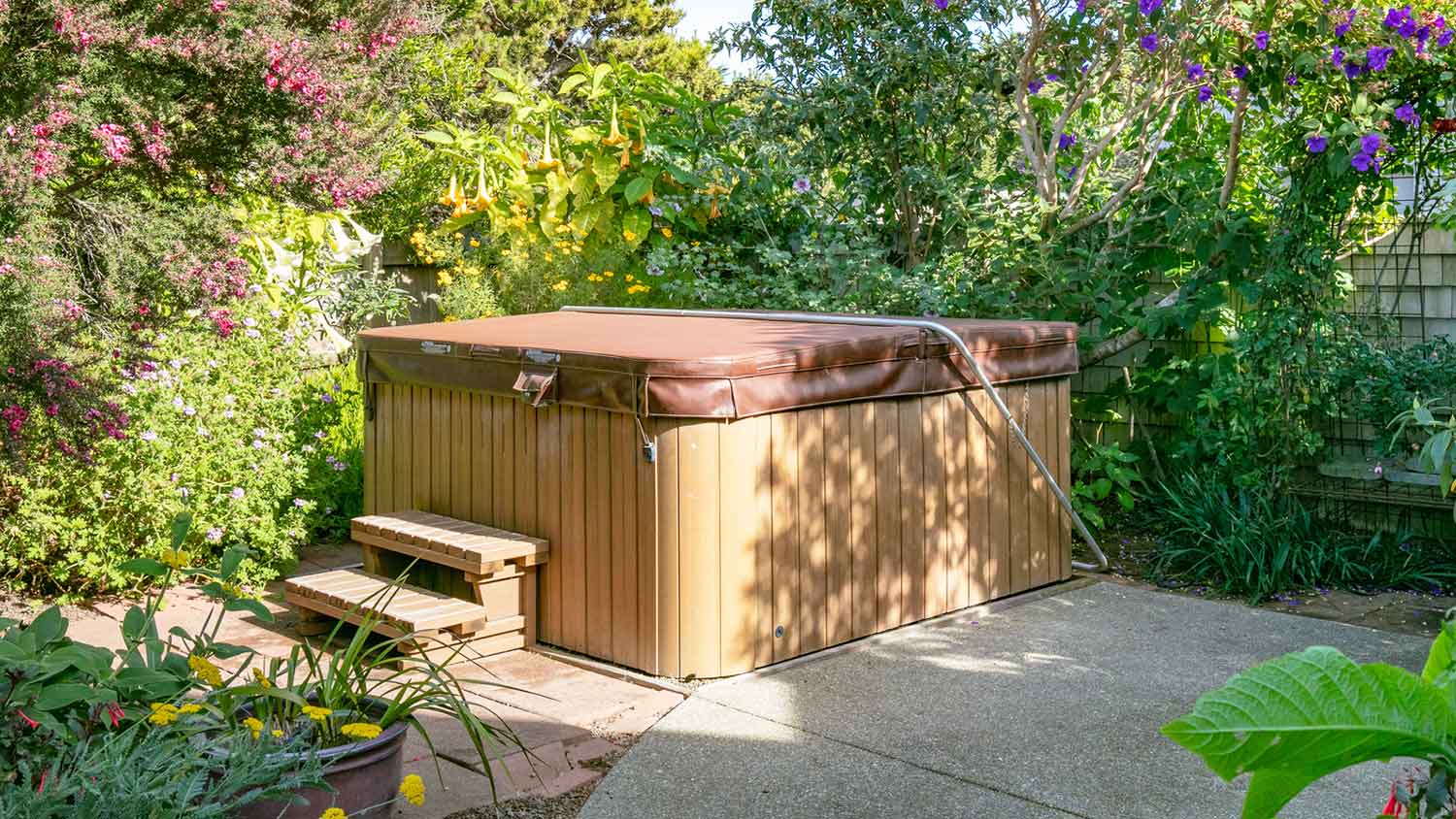Hot Tub Jets Not Working? Here Are Some Potential Reasons Why
Why your hot tub jets might be on a bubble-free rebellion


Clogs in the jets, filter, or pump can all prevent water from reaching hot tub jets.
A hot tub left uncovered is more likely to develop a clog around the pump impeller.
Hot tubs can get air locked, where an air bubble enters the system and prevents water from moving.
It is hard to face the disappointment of getting ready to soak in your hot tub, only to find the jets quiet and the water bubble-free. If hot tub jets will not turn on, there are a few different problems that can put a stop to that relaxing massage you crave. Air locks, clogs, or a malfunctioning pump could all be at fault for eerily quiet jets. Ditch the towels and get ready to dive into some easy (and a few less easy) reasons why your hot tub jets might not be working.
1. Ensure Jets are Open
This is one of the simplest hot tub problems to fix because it is less of a problem and more of a user error issue. Hot tub jets twist open and closed to adjust the strength of the stream. Sometimes, someone who does not love a back-beating stream may close a few jets but forget to open them again. Jets can also get closed accidentally as people move and shift in and out of the hot tub. Do a quick double check to start.
2. Look for Simple Jet Clogs

If the jets are open but still are not working, there is a chance that one of them is clogged. Jet clogs are less common than clogs in the filter (which we will cover later), since the water goes through a filter before entering the jets. But if the jet gets bumped and a piece of plastic breaks off into the jet, it can create a clog. In some cases, you can remove the offending piece. In others, you might either have to replace the jet yourself or call in a pro to do it if there is enough damage.
3. An Air-Locked System
Little to no pressure in the jets is often the first sign of air lock. This is when an air bubble enters the hot tub’s water line and prevents water flow. Air lock is more common after draining or lowering the water level in the tub. Sometimes fixing air lock is easy and just requires opening all the jets and running the system without the heater on. Other times, you may have to bleed the pump. If you are unfamiliar with the system, you might need to call in a hot tub repair service to take a deeper look and bleed air in the system.
4. Scale Buildup or Mineral Deposits
Scale buildup and mineral deposits can happen when water has high concentrations of dissolved inorganic materials. Scale is created by calcium and magnesium deposits. As water evaporates, it leaves behind a hard deposit that slowly collects and clogs the jet nozzle. This could be your problem if you have noticed that the nozzle has gotten harder and harder to adjust. If left unchecked, the scale or mineral deposits can slow or prevent water from exiting the jets.
Regularly using jet cleaning solutions can help prevent this kind of buildup; however, if the buildup gets so bad that the jets are not working, you might need to use descaling chemicals or get a professional pool or hot tub cleaner to do a full removal.
5. Check Water Level

If you have recently drained and refilled the hot tub, check the hot tub owner’s manual to ensure that there is enough water. Low water levels can cause air to get sucked into the water line and air-lock the system. You can solve the problem by adding more water and bleeding the air from the system. Some pumps have a bleeder valve near the heater tube, which makes this process easier. You need to close the nearest gate valve and slowly release the bleed valve until you hear air leaking out. Once the leaking sound stops, you can tighten the valve and open the gate valve again.
For systems without a bleeder valve, you can try to bleed the system by loosening the pump’s union fitting; however, if you are unfamiliar with your hot tub’s system, you might want to consult a professional.
6. Filter Clogs
A clogged filter can significantly limit water flow to the jets. Depending on how often you use the hot tub, you should rinse the filter approximately twice a week. Use a filter cleaner every other week to remove deposits and debris from in between the pleats. The filter itself should be replaced every year. If your filter and hot tub maintenance schedule has fallen behind, or you live in a place where debris easily enters the system, a clogged filter could be the issue.
7. Air and Diverter Valves
Air or diverter valves that are closed or open when they should not be can restrict water flow. They can get bumped or closed due to vibrations from regular use. Hot tub systems can vary, as can the type, location, and number of air and diverter valves. Some systems have an air valve to add volume to the water, while others have one or two diverter valves.
You may have dials and knobs to make adjustments to these valves from inside the hot tub; however, some in-ground hot tubs have valve adjustments on a separate panel outside of the hot tub. Check the owner’s manual and find the valves to ensure that they are in the correct position.
8. Check the Pump
If jets are blowing weakly, it is time to check the pump. Pump types and designs vary. Some hot tubs have two pumps—one to boost the jets and one to circulate water. Either pump can fail to turn on, which can cause issues for the jets. Single pump systems are not as complex, but a pump that is beginning to malfunction or that has a clog can prevent water from getting to the jets. Check the valves around the pump to make sure they are in the correct position.
If the pump pulsates or pauses while running, you could have a clog. The pump impeller is a likely location for a clog in the pump, which can lead to jet problems. The impeller creates the centrifugal force that pulls water into the pump and out through the hot tub’s tubing. Debris can enter the pump and prevent the impeller blades from moving. An uncovered hot tub is more likely to get leaves, twigs, and other debris stuck in the impeller. (If your hot tub cover needs repair, get it fixed immediately.) Cleaning the impeller requires turning off power and closing the valves on either end of the pump so you can open the impeller housing and remove the clog.
If you do not have a clog or an air-locked system and the pump still pauses or pulsates, the pump could be nearing the end of its life. Consult a professional to get an estimate on hot tub repair costs. Depending on your setup, pump replacement costs can be anywhere from $200 to $1,200.





- How Does a Hot Tub Work Its Magic?
- How to Clean a Hot Tub Filter Properly
- 13 Hot Tub Maintenance Tips to Maximize Relaxation Time
- 7 Types of Hot Tubs to Add to Your Home or Backyard
- How Long Does a Hot Tub Last?
- Can You Put a Hot Tub in Your Basement?
- Are Hot Tubs Worth It? Pros and Cons Explained
- 8 Must-Know Tips for Installing an Indoor Hot Tub
- 24 Hot Tub Deck Ideas for a Backyard Paradise
- Replacing vs. Refurbishing a Hot Tub: What You Should Know










